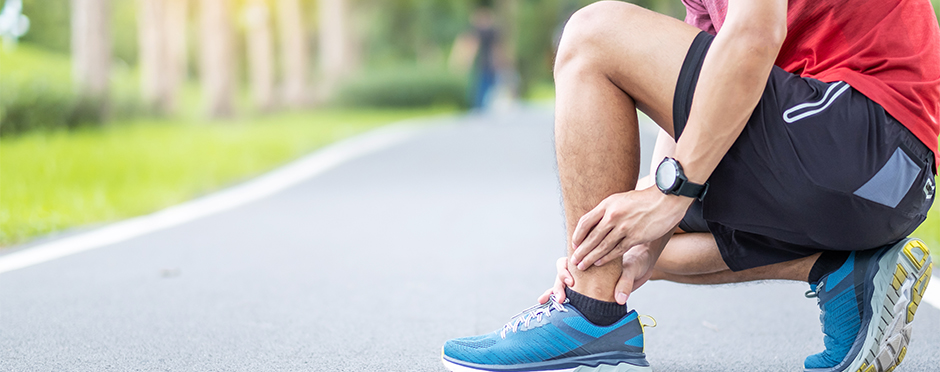
Why Does My Achilles Tendon Hurt When I Run?
Leave a CommentOur Achilles tendons don’t often get the praise they deserve. These large tendons on the back of our lower leg are surprisingly strong, and vitally important, especially for runners. The Achilles connects the muscles in our calves to our heel bones. Specifically, they connect the gastrocnemius and soleus muscles to the back of our calcaneus bone. Because of their attachment point, the Achilles tendons help propel us forward when we walk, run, or jump. Through this attachment, our Achilles tendons can withstand up to ten times our normal body weight when we run or jump. Just think about how many strides you took during your last run, and how many times up to ten times your body weight was placed on your Achilles tendon! Luckily you had a tough Achilles tendon to absorb all that force.
That said, like any body part, our Achilles tendons do sometimes experience pain. Achilles pain or injury can occur in any sport, but runners are the most commonly affected. Following the knee, the foot/ankle is the most common running injury location2. Let’s take a look at the most likely reasons a runner might have Achilles pain.
Overworked
This is the most common reason for Achilles pain with running. An overworked Achilles tendon will be inflamed and painful. The most likely sources of an overworked Achilles tendon are as follows: sudden increase in weekly running miles, addition of hills, or a high volume or speed/sprints. A simple rule of thumb is never to increase your weekly mileage more than 10% from the previous week to avoid an overworked Achilles. If you already have a painful and overworked Achilles, try to reduce running time and swap for a non-impact activity (think cycling or rowing).
Overstretched
If you have a clear memory of the exact moment your Achilles tendon pain began, you most likely overstretched. This usually happens when our ankle excessively dorsiflexes (the back of the foot comes up towards the shin), therefore stretching the Achilles tendon. This type of injury is going to need a significant reduction in running miles, and instead focus on strengthening to repair any microscopic musculotendinous tearing.
Tight Calf Muscles
Do you have stiff ankles? Do you even know how to check if your ankles are stiff? Check out this article (article 1 below) if you need some assistance. Stiffness in your ankle can commonly be felt as Achilles pain. Stretching and improving the mobility of the Achilles may alleviate some of this pain.
Footwear
Low-heel drop or zero-drop models, and ‘barefoot’ shoes have had moments of popularity in the running world. These shoes are often marketed as a more natural footwear, allowing for improved ground contact while running or walking. What this style describes is the height difference between the heel and the front of the foot while the shoe is worn. These shoes are measured in how many millimeters the foot “drops” from heel to forefoot. This kind of footwear shifts the force of running away from our legs and towards our ankles and feet. This can be beneficial for some very experienced runners, but detrimental to many others. If you have just started running, or have never analyzed your gait pattern, it is recommended to have a medium amount of heel drop. Novice runners will notice a heel drop of 10-14 millimeters to be most comfortable.
If the information above doesn’t address your Achilles tendon pain with running, schedule a free assessment at Athletico. We have thousands of active runners across the country who can help you create a plan to alleviate pain and return to running!
*Per federal guidelines, beneficiaries of plans such as Medicare, Medicaid, Tricare, VHA and other federally funded plans are not eligible for free assessments.
The Athletico blog is an educational resource written by Athletico employees. Athletico bloggers are licensed professionals who abide by the code of ethics outlined by their respective professional associations. The content published in blog posts represents the opinion of the individual author based on their expertise and experience. The content provided in this blog is for informational purposes only, does not constitute medical advice and should not be relied on for making personal health decisions.
Article 1: https://www.athletico.com/2023/04/14/is-your-ankle-mobility-holding-back-your-running/
References:
1. O’Brien M. The anatomy of the Achilles tendon. Foot Ankle Clin. 2005 Jun;10(2):225-38. doi: 10.1016/j.fcl.2005.01.011. PMID: 15922915.
2. van Mechelen W. Running injuries. A review of the epidemiological literature. Sports Med. 1992 Nov;14(5):320-35. doi: 10.2165/00007256-199214050-00004. PMID: 1439399.
